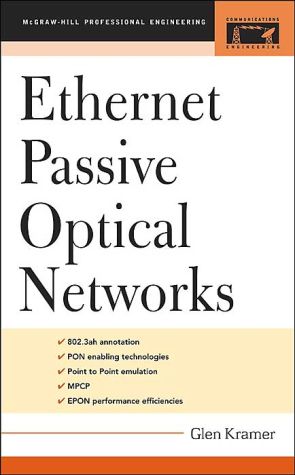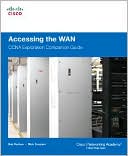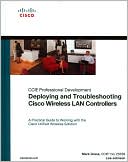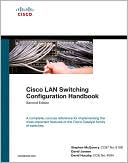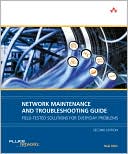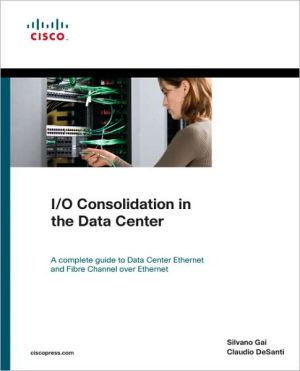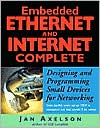Ethernet Passive Optical Networks
THE DEFINITIVE GUIDE TO EPON\ Written by one of the authors of the IEEE802.3ah standard, this is the first book to fully explain the EPON architecture, analyze its performance, and annotate the standard.\ Clearly addressing efficiency, performance, and implementation issues, Ethernet Passive Optical Networks provides valuable, annotated insights into all engineering-critical EPON topics, including:\ \ PON enabling technologies\ Point-to-point emulation\ Multi-point control protocol\ Error...
Search in google:
Spurred by demand, EPON has taken the industry by storm, rising from raw idea to the standard in about five years. Working from the IEEE 802.3ah standard, system architect and researcher Kramer explains this significant departure in architecture and describes issues not in the standard, such as security, protection, bandwidth allocations, quality of service and utilization. He introduces access network architecture and the particulars of the architecture of the EPON, and describes performance in detail, including aspects of slot allocation and assignment, the objectives of the EPON scheduling algorithm, and Cousin-Fair hierarchical scheduling. In appendices Kramer describes characteristics of network traffic and synthetic traffic generation. Each section includes references. Annotation ©2005 Book News, Inc., Portland, OR
Ch. 1Introduction3Ch. 2Overview of PON enabling technologies13Ch. 3Access network architectures based on TDMA PON25Ch. 4Emergence of ethernet PON33Ch. 5EPON overview45Ch. 6Logical topology emulation65Ch. 7Laser control function77Ch. 8Multi-point control protocol : a formal specification85Ch. 9Forward error correction139Ch. 10EPON encryption151Ch. 11Path protection in EPON165Ch. 12Baseline efficiency173Ch. 13Discovery slot allocation183Ch. 14EPON with static slot assignment189Ch. 15EPON with dynamic slot assignment201Ch. 16Support for differentiated classes of service215Ch. 17Objectives of EPON scheduling algorithm237Ch. 18Cousin-fair hierarchical scheduling in EPON249Ch. 19Conclusion279App. ACharacteristics of network traffic283App. BSynthetic traffic generation287
